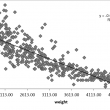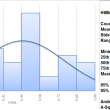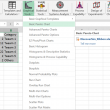What is One Way ANOVA? One way Analysis of Variance is a statistical method to compare means of two or more populations. It is a generalized form of the two sample t-test since a two sample t-test compares two population means and one way ANOVA compares k population means where k ≥ 2. Null Hypothesis (H0): μ_1=μ_2=…=μ_k […]














